
Station Name: TYNEMOUTH (1st site)[Source:
Alan Young]
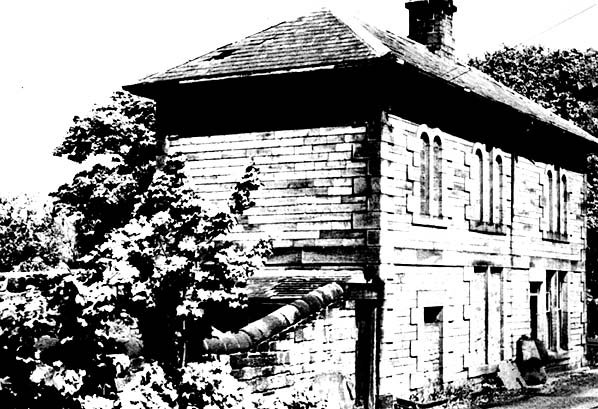 Although this structure adjoined the site of the first B&T Tynemouth station, and has been identified in some sources as the station building, it is unlikely to have been in railway use. (1961)
Photo by LG Charlton 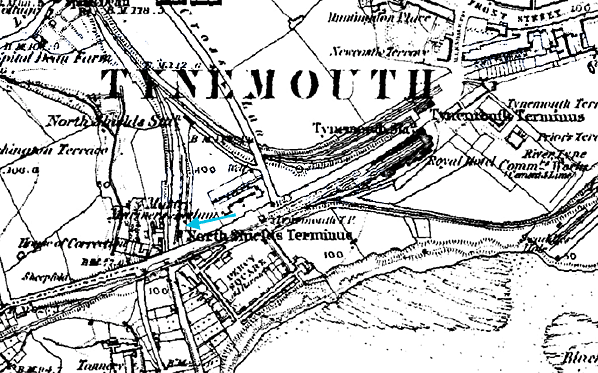 This 1:10,560 map, published in 1865, captures the Tynemouth / North Shields area at a very interesting stage in its railway development. ‘North Shields Terminus’ was the B&T’s Tynemouth (1st) station, opened to goods in 1860 and passengers in 1861. It closed to passengers in 1863 but continued in use for goods traffic under the name of North Shields. The replacement on a new branch to its north was Tynemouth (2nd), but this one was renamed North Shields – as it is shown on the map – when Tynemouth (3rd) was opened on an extension towards the coast (shown as Tynemouth Terminus). The Newcastle & Berwick’s Tynemouth station, by 1865 owned by the North Eastern Railway and including the Royal Hotel, can be seen immediately south of the B&T’s 3rd station.
first_old4.jpg)
The site of Tynemouth (1st) station continued to be used as a coal depot until 1971. This view shows the site in April 1972.
Photo by JC Dean first_old5.jpg)
The site of Tynemouth (1st) station continued to be used as a coal depot until 1971. This view shows the site in April 1972. The former coal drops are seen in the foreground.
Photo by JC Dean 2.jpg)
The site of Tynemouth (1st) station (later the coal depot) looking north in July 1987.
Photo by John Mann 3.jpg) The site of Tynemouth (1st) station (later the coal depot) looking north in July 1987.
Photo by John Mann 1.jpg)
Looking north towards the site of Tynemouth (1st) station, which, in this June 2001 view, is now occupied by a residential development called Hazeldene Court.
Photo by Ali Ford
| |||||
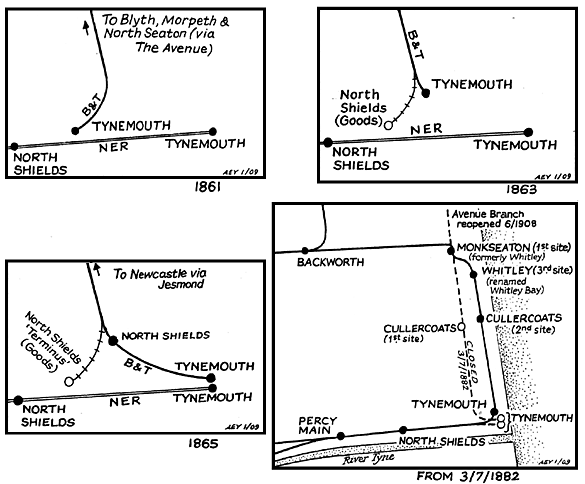

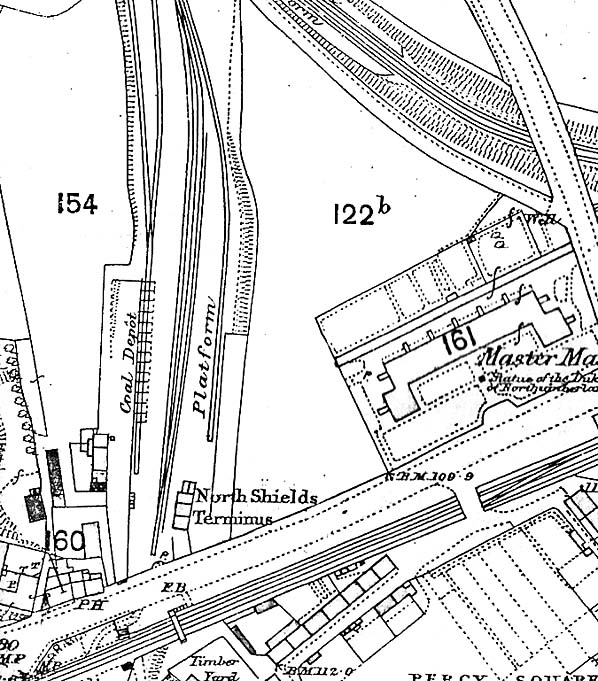
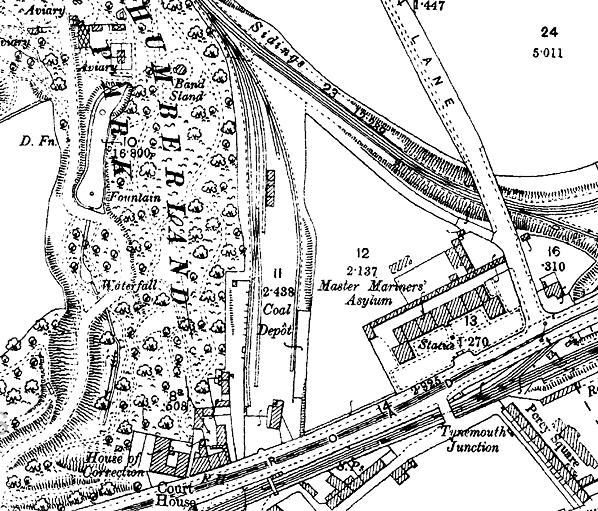 1898 1:2,500 OS Map. Tynemouth (1st) can now be seen as a coal depot, while Tynemouth (2nd) – later ‘North Shields’ – is no longer shown. The current Tynemouth station, east of the map, had been opened by the North Eastern Railway in 1882, replacing the former B&T North Shields and Tynemouth stations and its own earlier terminus.
1898 1:2,500 OS Map. Tynemouth (1st) can now be seen as a coal depot, while Tynemouth (2nd) – later ‘North Shields’ – is no longer shown. The current Tynemouth station, east of the map, had been opened by the North Eastern Railway in 1882, replacing the former B&T North Shields and Tynemouth stations and its own earlier terminus.first_old1.jpg)
first_old2.jpg) Tynemouth (1st) station site serving as the coal depot. Looking south-east in April 1972. It is not known if the platform in the foreground was formerly used by passengers.
Tynemouth (1st) station site serving as the coal depot. Looking south-east in April 1972. It is not known if the platform in the foreground was formerly used by passengers.first_old3.jpg)

 Home Page
Home Page